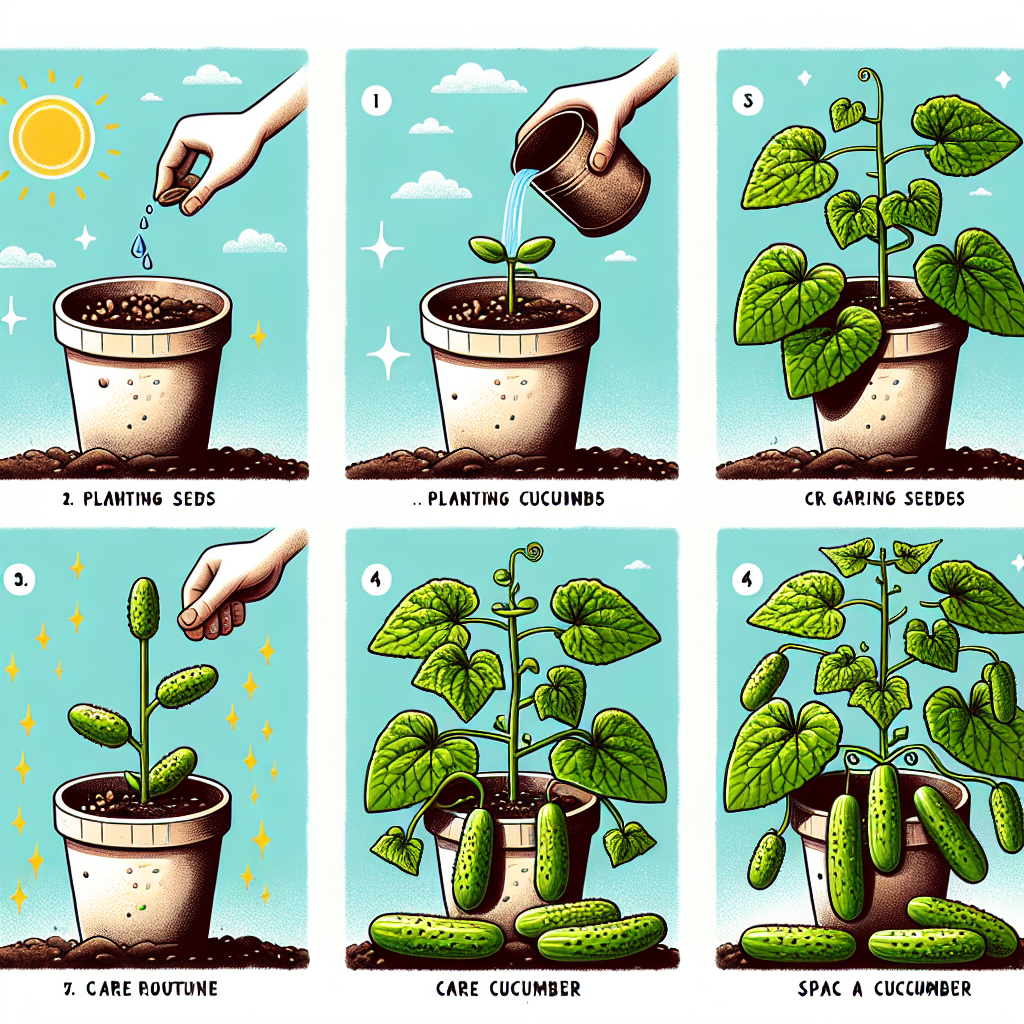
How to grow spacemaster cucumbers
How to Grow Spacemaster Cucumbers: A Beginner's Guide
If you’re looking for a delicious and nutritious addition to your garden, Spacemaster cucumbers should be at the top of your list. These compact cucumber varieties are perfect for small spaces, making them an excellent choice for container gardening or small plots. This article will provide you with everything you need to know about how to grow Spacemaster cucumbers, from selecting the right seeds to harvesting your crunchy produce.
Understanding Spacemaster Cucumbers
Spacemaster cucumbers (Cucumis sativus) are a bush-type variety that typically produce medium-sized fruits with a crisp texture and delightful flavor. Unlike conventional cucumbers, which can sprawl and take up a lot of space, Spacemaster cucumbers grow more vertically, making them ideal for urban gardeners or those with limited outdoor areas. They are known for their disease resistance and high yield, providing gardeners with plenty of cucumbers throughout the growing season.
Choosing the Right Environment
To successfully grow Spacemaster cucumbers, understanding their environmental requirements is essential. Here are the critical factors to consider:
- Sunlight: Cucumbers thrive in full sun, so aim for at least 6-8 hours of direct sunlight daily.
- Temperature: Ideal growth occurs between 70°F and 90°F. A sudden drop in temperature can hinder growth.
- Soil: Well-drained, loamy soil enriched with organic matter is perfect for cucumbers.
- Space: Even though they are compact, Spacemaster cucumbers still require adequate space to grow effectively.
Preparing Your Soil
Before planting, preparing your soil is essential. Here's how to enrich it for optimal growth:
- Test the soil: Use a soil test kit to determine pH and nutrient levels.
- Add organic matter: Incorporate compost or well-rotted manure to improve soil structure and nutrients.
- Ensure drainage: Amend heavy soils with sand or perlite to enhance drainage capacity.
- pH level: Aim for a pH level between 6.0 and 7.0, which is ideal for cucumber growth.
Planting Spacemaster Cucumbers
There are two main methods for planting Spacemaster cucumbers: direct sowing in the garden or starting seeds indoors. Here’s a breakdown of each method:
Direct Sowing
For those growing directly in their garden:
- Timing: Plant seeds outdoors after the danger of frost has passed and the soil has warmed, typically in late spring.
- Spacing: Sow seeds about 1 inch deep with spacing of 12 to 18 inches between each plant. For a more compact growth, you can reduce the spacing slightly.
- Watering: Water the seeds immediately after planting and ensure the soil remains consistently moist but not soggy.
Starting Seeds Indoors
If you prefer to start seeds indoors:
- Container selection: Use biodegradable pots to minimize transplant shock.
- Sowing: Sow seeds 3-4 weeks before the last frost date, 1 inch deep.
- Transplanting: Transplant outside after the seedlings have at least two true leaves and the outdoor conditions are favorable.
Caring for Your Spacemaster Cucumbers
Once your cucumbers are planted, proper care is critical for a successful harvest. Here are some care tips:
Watering
Cucumbers prefer steady moisture, especially during flowering and fruiting stages. Here’s how to water effectively:
- Water deeply once or twice a week rather than shallow and frequent watering.
- Mulch around the plants with straw or wood chips to retain soil moisture.
- Avoid watering the leaves to prevent fungal diseases.
Fertilization
To ensure healthy growth, you should fertilize your Spacemaster cucumbers:
- Use a balanced fertilizer (such as a 10-10-10 NPK) at the time of planting.
- Feed with a high-potassium fertilizer when the plants start to flower.
- Monitor for nutrient deficiencies, which may present as yellowing leaves.
Pest and Disease Management
Spacemaster cucumbers can be susceptible to various pests and diseases. Here are a few common ones and how to manage them:
| Pest/Disease | Symptoms | Prevention/Control |
|---|---|---|
| Spider Mites | Yellow stippling on leaves, webbing on plants | Introduce beneficial insects like ladybugs; use insecticidal soap if severe |
| Powdery Mildew | White powdery spots on leaves | Ensure good air circulation; avoid overhead watering and remove affected leaves |
| Cucumber Beetles | Wilting and yellowing of leaves, chewed leaves | Place yellow sticky traps; use floating row covers early in the season |
Training and Supporting Your Ergonomic Plants
Because Spacemaster cucumbers are a bush variety, they don’t need extensive support like other climbing cucumber varieties. However, some gardeners prefer to provide light support to keep the fruits off the ground, which can help prevent rot. Here are some options:
- Use a trellis at the back of your garden bed.
- Install tomato cages around the plants.
- Employ short stakes to lift branches and improve airflow around the plants.
Harvesting Spacemaster Cucumbers
Your hard work will pay off when it’s time to harvest your Spacemaster cucumbers! Here’s how to determine when they’re ready:
Conclusion
Growing Spacemaster cucumbers can be a rewarding experience, providing you with an abundant crop in a small and manageable space. With careful attention to their specific needs for sunlight, water, and care, you’ll soon be enjoying fresh, homegrown cucumbers in your salads and sandwiches.
Start your gardening journey today, and you’ll find that mastering the art of how to grow Spacemaster cucumbers is an easy and enjoyable endeavor! Remember to stay vigilant about pests and diseases and have fun experimenting with your local gardening practices. Happy gardening!
By Guest, Published on September 28th, 2024